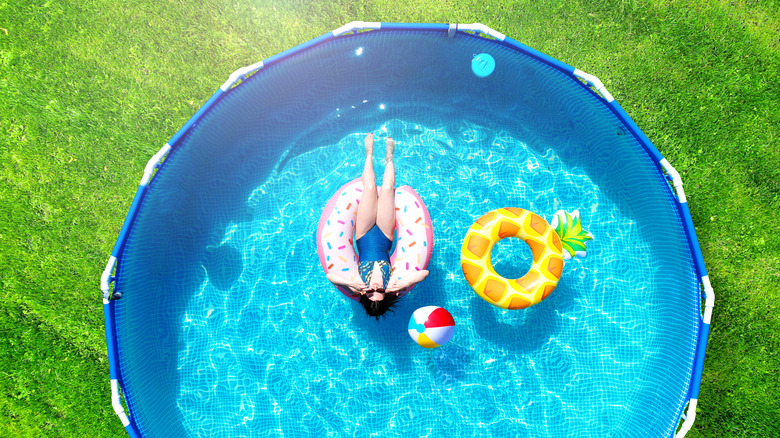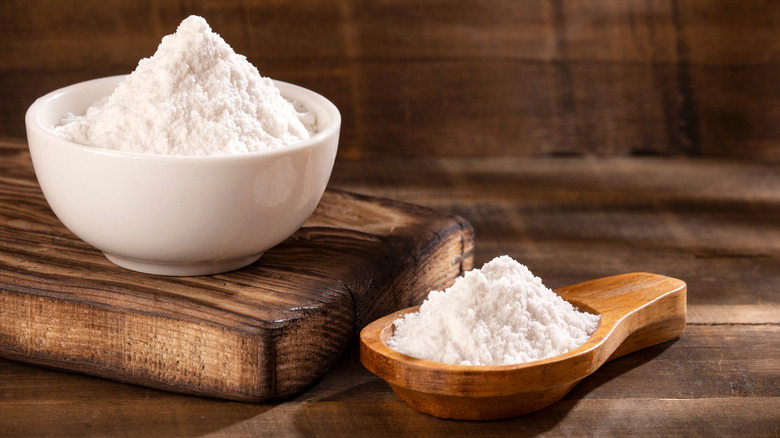This Is What Happens When You Put Baking Soda In Your Pool
Putting baking soda into your pool is not as strange as it sounds. Baking soda, or sodium bicarbonate, is the main ingredient in many commercial pool products. It's naturally alkaline, with a pH of 8, making it perfect for raising the alkalinity and pH of pool water, according to Arm & Hammer. Baking soda will also improve the stability and clarity of cloudy pool water.
You'll want to add baking soda to your pool if the water has too much chlorine. Pool water of this nature can cause swimmers to have itchy skin and stinging eyes. In addition, it can corrode pool ladders, liners, and other components.
Choosing to use baking soda instead of a commercial pool product can be cost-effective. For instance, a 15-pound bag of baking soda costs about $16, while a 16-pound bag of pool alkalinity has a price tag of about $25, via Walmart and Home Depot.
How to use baking soda in your pool
If you tested your pool water and the pH is low, you can add baking soda by the pound. Arm & Hammer explain that if you need to raise the alkalinity of your pool water by 10 ppm, you should add 1.5 pounds of baking soda for every 10,000 gallons of pool water. If the pH of your pool tests below 7.2, you should add about 3 to 4 pounds of baking soda. Since baking soda is a powdery substance, you don't have to worry too much about it dissolving. Although, you shouldn't dump it all in one spot. The best way to add it is in wide arcs across the pool.
Like all pool chemicals, these amounts should be halved when added to the pool — so you don't accidentally add too much. You should wait at least six hours and retest the pool water before adding the second half. Note that too baking soda in a pool can cause calcium build-up, which, in turn, will make the water cloudy, according to Pool and Patio Pros.

